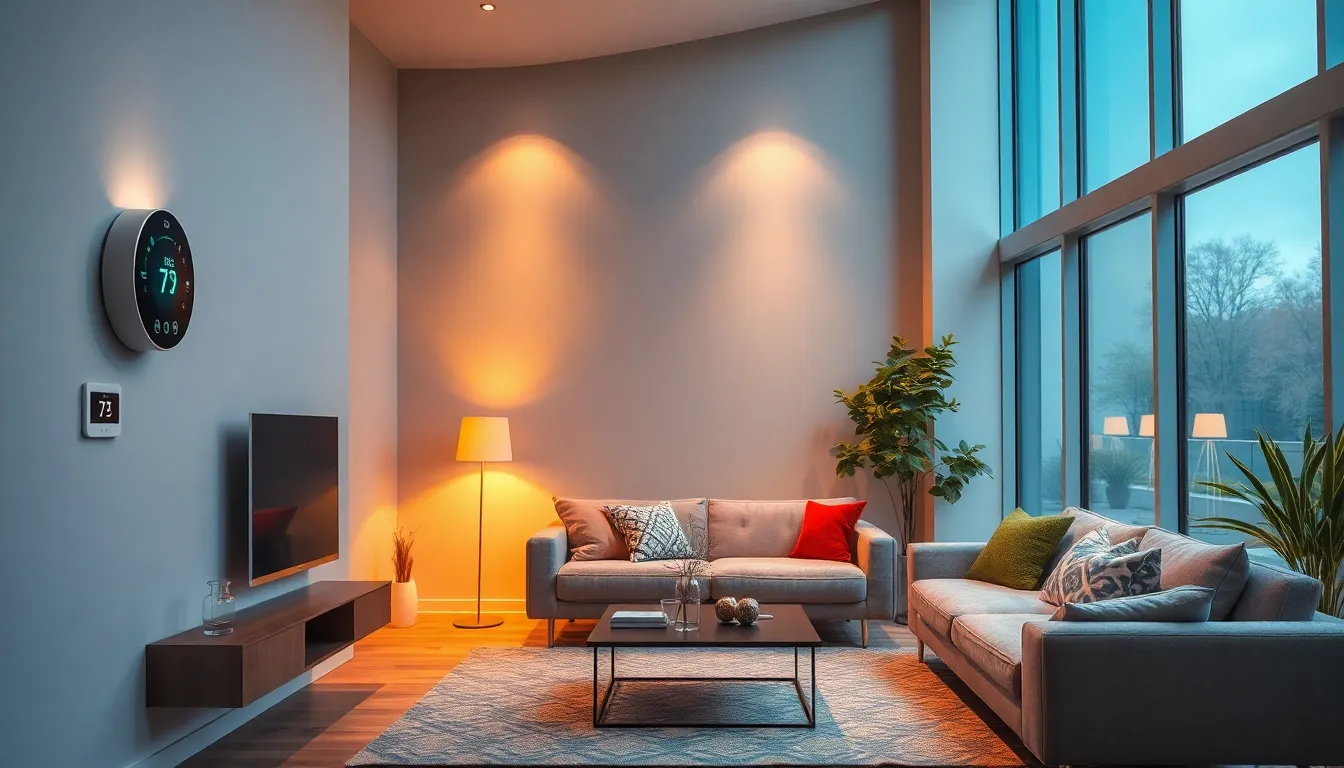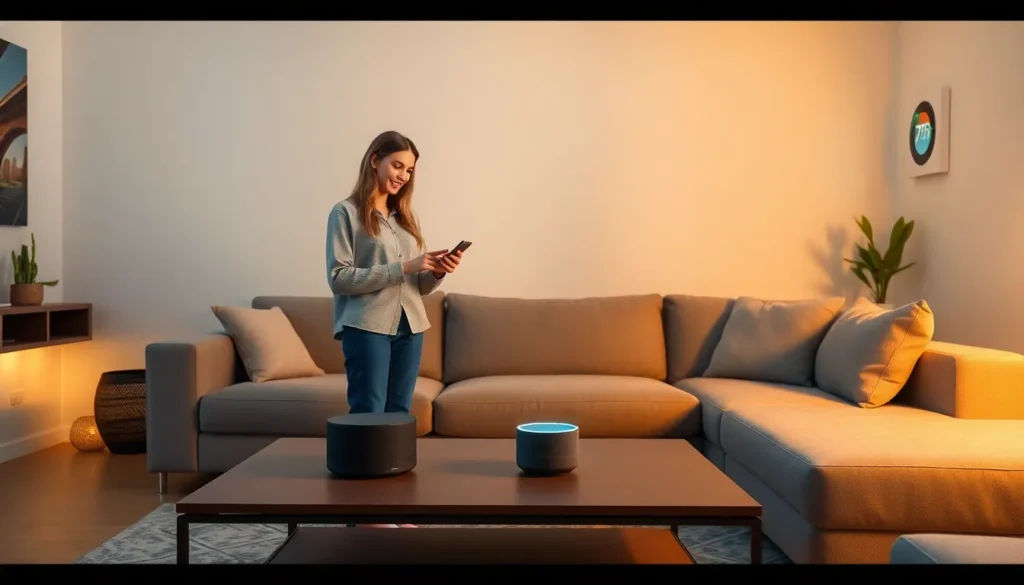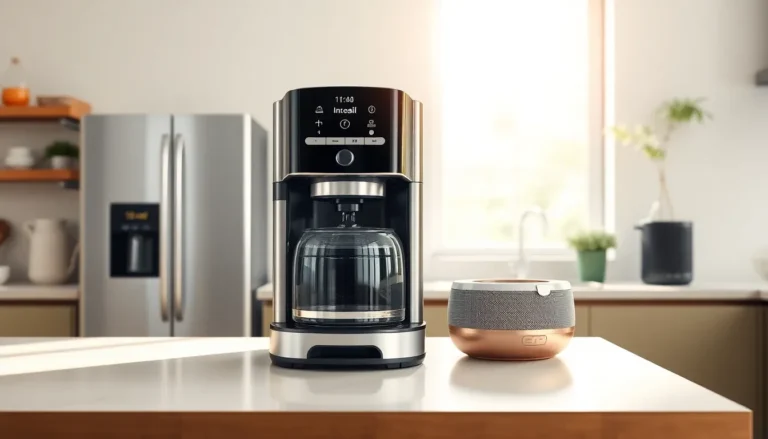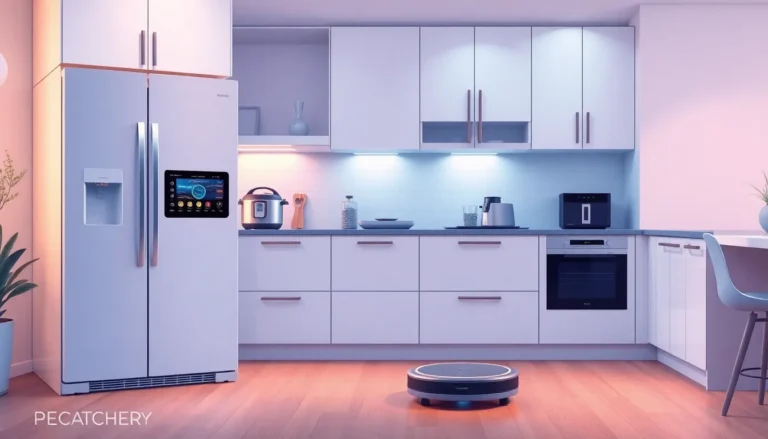Table of Contents
ToggleImagine a world where your home does the heavy lifting while you kick back with a snack. Smart home improvements are like giving your house a brain upgrade. From voice-activated assistants to energy-efficient gadgets, these innovations not only make life easier but also add a sprinkle of futuristic flair.
Why settle for a regular home when you can transform it into a high-tech haven? Whether it’s controlling your lights with a mere whisper or having your coffee brewed before you even get out of bed, smart technology is here to make your life a whole lot simpler. Plus, who wouldn’t want to impress their friends with a home that practically runs itself? Dive into the world of smart home improvements and discover how to make your living space not just smarter, but also a tad more entertaining.
Benefits of Smart Home Improvements
Smart home improvements provide various advantages, enhancing both convenience and efficiency. These innovations play a vital role in transforming living environments.
Enhanced Security
Enhanced security ranks as a primary benefit of smart home improvements. Smart cameras and motion sensors monitor properties continuously, ensuring safety. Remote access allows homeowners to check security feeds from anywhere, providing peace of mind. Doorbell cameras offer real-time insights when visitors arrive. Alerts from security systems operate instantaneously, helping deter potential intruders. Integration with smartphones enables quick responses to security breaches. Automated lighting simulates occupancy, increasing security when away from home.
Energy Efficiency
Energy efficiency stands out prominently among the benefits of smart home improvements. Smart thermostats optimize heating and cooling, adjusting settings based on user habits. These devices can result in energy cost savings of up to 30%. Smart lighting systems use LED technology and can be programmed to turn off when not in use, reducing waste. Appliances equipped with smart technology operate during off-peak hours, further lowering energy bills. Real-time energy monitoring applications provide insights into consumption patterns. Automating energy use results in both environmental benefits and financial savings.
Popular Smart Home Devices

Smart home devices revolutionize the way homeowners interact with their living spaces. They enhance convenience, energy efficiency, and security significantly.
Smart Thermostats
Smart thermostats adjust temperatures automatically based on user habits and preferences. These devices learn from daily routines, ultimately optimizing energy consumption. Notable models, like the Nest Learning Thermostat, enable remote access via mobile apps. Users can change settings from anywhere, ensuring comfort even before arriving home. Energy reports provided by these systems help identify opportunities for savings. On average, households can experience a 10% to 12% reduction in heating and cooling costs annually.
Smart Lighting
Smart lighting systems allow users to control illumination with ease and precision. Features such as dimming, color changing, and scheduling personalize home experiences. Popular products, like Philips Hue, integrate seamlessly with voice assistants, offering convenience during daily tasks. Homeowners can automate lights to turn on or off at specific times, enhancing security while away. Energy savings can reach up to 80% compared to traditional bulbs when using LED smart lights. Such systems create ambience tailored to any occasion, combining functionality with comfort.
Integrating Smart Home Technology
Integrating smart home technology involves selecting devices that enhance convenience and security while ensuring compatibility. Homeowners benefit from careful planning and informed choices.
Choosing the Right Hub
Selecting the right hub serves as the foundation for a cohesive smart home ecosystem. Consider options like Amazon Echo or Google Nest Hub, which provide extensive connectivity with a variety of devices. Price ranges typically span from $50 to $300, depending on features and capabilities. Each hub offers unique advantages, such as voice control and central management of connected devices. Compatibility with numerous smart devices simplifies the integration process, making it easier to automate daily routines and control home functions from a single app.
Compatibility with Existing Devices
Ensuring compatibility with existing devices remains crucial for a successful integration. Many homes already feature smart devices, including smart plugs and lighting systems. When selecting new components, check for compatibility with current systems to avoid integration challenges. Not every device works seamlessly together, potentially leading to connectivity issues. Researching compatibility will enable homeowners to enhance their setup without unnecessary complications. Utilizing compatibility charts can further guide selections, ensuring cohesive operation across the spectrum of smart devices.
Cost Considerations
Smart home improvements involve several cost factors worth evaluating. Understanding these costs can help homeowners make informed decisions about upgrades.
Initial Investment
Cost varies based on the complexity and number of devices chosen. Budget for essential devices like smart thermostats, lighting systems, and security cameras. A Nest Learning Thermostat averages $250, while Philips Hue starter kits typically start around $150. Additional expenses include installation or subscription fees, particularly for security services. Homeowners should set aside funds for high-quality hubs, such as Amazon Echo or Google Nest Hub, which enhance device compatibility. The initial investment, though significant, sets the stage for a more automated lifestyle.
Long-Term Savings
Smart devices lead to substantial long-term savings through energy efficiency and reduced utility bills. Studies show smart thermostats can reduce heating and cooling costs by 10% to 12%. Automated lighting systems can save homeowners up to 80% compared to traditional bulbs. Furthermore, enhanced security features may lower homeowner insurance premiums, as properties equipped with smart technology often qualify for discounts. Through careful selection of smart products, homeowners can expect a return on investment within a few years, making these upgrades financially advantageous.
Embracing smart home improvements can significantly elevate the living experience. By integrating cutting-edge technology homeowners can enjoy increased convenience enhanced security and improved energy efficiency. These innovations not only simplify daily tasks but also provide peace of mind through advanced monitoring systems.
Investing in smart devices may require an initial financial commitment but the long-term benefits often outweigh the costs. Homeowners can expect reduced utility bills and potential savings on insurance premiums. As technology continues to evolve the possibilities for creating a more connected and efficient home are virtually limitless.
Exploring smart home solutions opens the door to a future where everyday living becomes more enjoyable and efficient.







